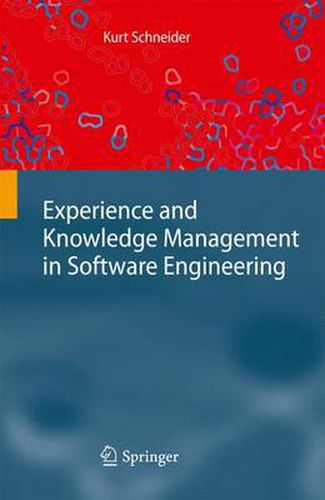Readings Newsletter
Become a Readings Member to make your shopping experience even easier.
Sign in or sign up for free!
You’re not far away from qualifying for FREE standard shipping within Australia
You’ve qualified for FREE standard shipping within Australia
The cart is loading…






This title is printed to order. This book may have been self-published. If so, we cannot guarantee the quality of the content. In the main most books will have gone through the editing process however some may not. We therefore suggest that you be aware of this before ordering this book. If in doubt check either the author or publisher’s details as we are unable to accept any returns unless they are faulty. Please contact us if you have any questions.
Nowadays, there is software everywhere in our life. It controls cars, airplanes, factories, medical implants. Without software, banking, logistics and transportation, media, and even scientific research would not function in the accustomed way. Building and maintaining software is a knowledge-intensive endeavour and requires that specific experiences are handled successfully. However, neither knowledge nor experience can be collected, stored, and shipped like physical goods, instead these delicate resources require dedicated techniques. Knowledge and experience are often called company assets, yet this is only part of the truth: it is only software engineers and other creative employees who will effectively exploit an organisation’s knowledge and experience.
Kurt Schneider’s textbook is written for those who want to make better use of their own knowledge and experience - either personally or within their group or company. Everyone related to software development will benefit from his detailed explanations and case studies: project managers, software engineers, quality assurance responsibles, and knowledge managers. His presentation is based on years of both practical experience, with companies such as Boeing, Daimler, and Nokia, and research in renowned environments, such as the Fraunhofer Institute. Each chapter is self-contained, it clearly states its learning objectives, gives in-depth presentations, shows the techniques’ practical relevance in application scenarios, lists detailed references for further reading, and is finally completed by exercises that review the material presented and also challenge further, critical examinations. The overall result is a textbook that is equally suitable as a personal resource for self-directed learning and as the basis for a one-semester course on software engineering and knowledge management.
$9.00 standard shipping within Australia
FREE standard shipping within Australia for orders over $100.00
Express & International shipping calculated at checkout
This title is printed to order. This book may have been self-published. If so, we cannot guarantee the quality of the content. In the main most books will have gone through the editing process however some may not. We therefore suggest that you be aware of this before ordering this book. If in doubt check either the author or publisher’s details as we are unable to accept any returns unless they are faulty. Please contact us if you have any questions.
Nowadays, there is software everywhere in our life. It controls cars, airplanes, factories, medical implants. Without software, banking, logistics and transportation, media, and even scientific research would not function in the accustomed way. Building and maintaining software is a knowledge-intensive endeavour and requires that specific experiences are handled successfully. However, neither knowledge nor experience can be collected, stored, and shipped like physical goods, instead these delicate resources require dedicated techniques. Knowledge and experience are often called company assets, yet this is only part of the truth: it is only software engineers and other creative employees who will effectively exploit an organisation’s knowledge and experience.
Kurt Schneider’s textbook is written for those who want to make better use of their own knowledge and experience - either personally or within their group or company. Everyone related to software development will benefit from his detailed explanations and case studies: project managers, software engineers, quality assurance responsibles, and knowledge managers. His presentation is based on years of both practical experience, with companies such as Boeing, Daimler, and Nokia, and research in renowned environments, such as the Fraunhofer Institute. Each chapter is self-contained, it clearly states its learning objectives, gives in-depth presentations, shows the techniques’ practical relevance in application scenarios, lists detailed references for further reading, and is finally completed by exercises that review the material presented and also challenge further, critical examinations. The overall result is a textbook that is equally suitable as a personal resource for self-directed learning and as the basis for a one-semester course on software engineering and knowledge management.